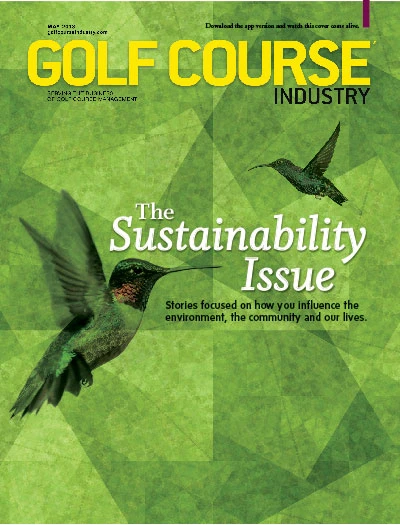
|
|
Many people, especially in the regulatory arena, would consider “sustainable irrigation” to be an oxymoron. Basically they believe irrigation in no way can be considered sustainable because it uses water irresponsibility. So, is sustainable irrigation on a golf course actually possible? And if so, what does it look like? Sustainability is one of this decade’s big buzz words and it has different meanings to different people. If you were to Google the word “sustainability” you would find approximately 115 million results. There are many different definitions, but one of the more recognized definitions – and the one I prefer – is “developments that meet the needs of the present without compromising the ability of future generations to meet their own needs.” With this definition you can pretty much replace the word “development” with other applicable words such as: operations, actions, procedures, or practices. For my purposes and this column’s, I will define it as irrigation practices that meet the needs of the present without compromising the ability of future generations to meet their own needs. Basically, don’t do something today that will screw up somebody or something tomorrow. Sustainability has three aspects to it; economy, environment and social. These all overlap (see the inset image) to show how each affects the other, whether it be variable, bearable or equitable. When practicing sustainability, weigh how your decisions will impact society, the environment and your economics and will the results be bearable, equitable and viable.
In irrigation, this mostly comes down to water use (everything seems to these days), but it also involves proper equipment selection, proper maintenance, proper installation and efficient use of energy. Some sustainable irrigation practices are simple and very straight forward and you should be practicing them already. Here are a few examples:
|

Explore the May 2013 Issue
Check out more from this issue and find your next story to read.
Latest from Golf Course Industry
- Standard Golf announces new product lineup for 2025
- The Salt Pond taps Troon for management
- KemperSports selected to manage Swansea Country Club
- From the publisher’s pen: Grab that guide
- Introducing our April 2025 issue
- South Carolina leaders honor golf course superintendent
- One and only
- Wild can be good
.jpg)






